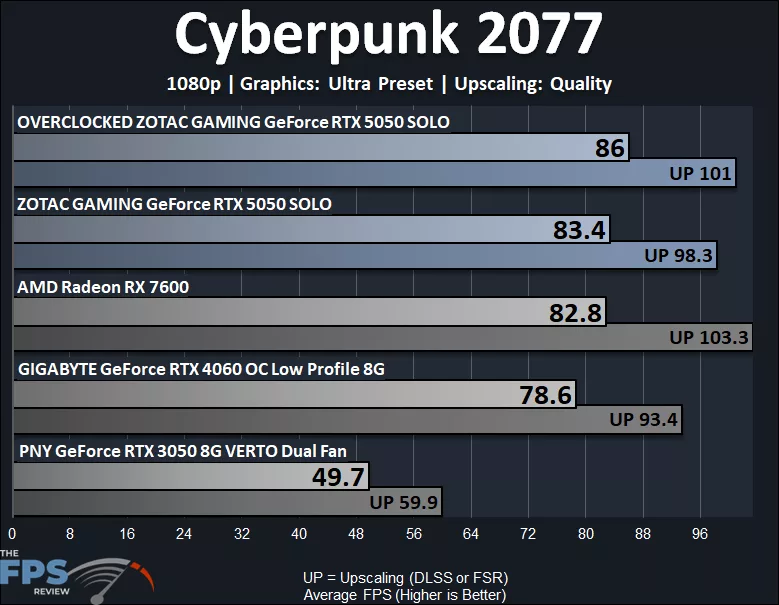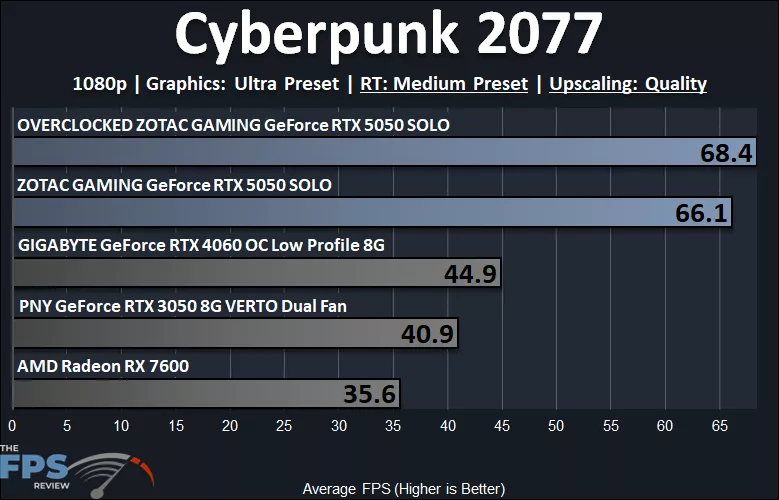Cyberpunk 2077
Cyberpunk 2077 was launched to PC in December of 2020 based on the REDengine 4. Cyberpunk 2077 is well known for its continual addition of advanced Ray Tracing and Path Tracing features, including DLSS 4, Ray Reconstruction, and Frame Generation. It also features a highly detailed geometric environment, advanced shadowing and lighting, and global illumination. We are utilizing the game’s built-in graphics presets for selecting graphics quality modes. We will be using the built-in benchmark, but utilizing Frameview to capture 1% Lows.
Native Resolution

To our delight, in Cyberpunk 2077, the ZOTAC GAMING GeForce RTX 5050 SOLO is able to provide a very playable experience at 1080p Native Resolution “Ultra” settings. We are seeing an average of 83FPS at Native Resolution, and almost 100FPS average with DLSS Upscaling. The ZOTAC GAMING GeForce RTX 5050 SOLO performs very fast in this game and is 68% faster than the GeForce RTX 3050, a very big leap from a generational upgrade. It is also 6% faster than the GeForce RTX 4060 and 1% faster than the Radeon RX 7600. Overclocking adds about 3% to performance, so not so great here.
Ray Tracing w/ DLSS Upscaling

The ZOTAC GAMING GeForce RTX 5050 SOLO actually handles Ray Tracing in Cyberpunk 2077 pretty well at 1080p. In the above graph, we are running at the “Ultra” game graphics preset with “Medium” Ray Tracing turned on and DLSS Upscaling Quality mode enabled. The ZOTAC GAMING GeForce RTX 5050 SOLO provides a playable experience over 60FPS average. The ZOTAC GAMING GeForce RTX 5050 SOLO is 62% faster than the GeForce RTX 3050, and 86% faster than the Radeon RX 7600. It also flies past the GeForce RTX 4060 at 47% faster! Overclocking adds 3% to performance.
